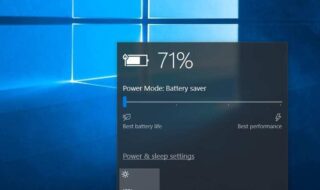Statistics suggest that competition in the world of mobile apps is growing every year. Even regular users see how many apps have become available on the popular app stores (the App Store and Google Play), while third-party app stores have gotten a big boost.
It might be challenging to promote applications in such a contested environment. There are methods that, as it may seem at first glance, will yield large amounts of traffic: blogger integration, for example. Or we can recall some special techniques like optimizing an app’s page on the store.
In this text, we will tell you what methods we utilize at the app marketing agency LoveMobile.
Contents
Optimizing an app’s page — ASO
App Store Optimization, or ASO, is just the same thing as SEO, in the mobile world. Good ASO contributes to getting your app to the top of store results, allows target users to find your app, and can positively impact conversions.
What is ASO about?
- Text content optimization
This process includes improving the title, brief and full descriptions, and keywords on the App Store.
- It’s important that the app name is unique and reflects its nature.
- When working on ASO, you need to employ the keywords by which users can find your apps. But add keywords wisely — to keep the text clear and understandable to the reader.
- Your app’s full description only impacts ranking on Google Play. It should describe the app’s functionality.
- Graphics optimization
The visual components of an app’s page include the icon, screenshots, and the video.
- You can learn about the number of screenshots and related requirements from the Google Play and App Store guides. Screenshots can show what the benefits of your app are.
- The video can be used as a tutorial or to demonstrate the “inside” of a game or application.
- The icon is the very first thing a user sees in the results. Be sure to pay special attention to it.
A well-optimized page on the store greatly increases your app’s chances of being visible to potential users.
Incentivized traffic
Incentivized traffic means real users who receive rewards for performing target actions. In mobile marketing, incentivized traffic is used to promote apps in search results on stores, adjust the app’s rating, and generate reviews.
The strongest factor affecting the app’s position is the number of installations from search results. When a user enters a search query and installs an app from search, the store sees this as a positive signal and raises the app in the rankings.
Eventually, your product gains visibility (gets higher positions) and sees more organic installs. Since the top three apps in search results capture more than 70% of installations, it’s crucial that you hold one of these positions. And this is where you need to pick the right strategy.
Rating adjustment
Your app’s rating is what shapes a user’s decision to install — or not install. A poor rating (under 4.2) may frighten a user away from downloading your application.
The same is true for reviews. If the app sees an ocean of negative reviews or a critical review has gathered a ton of likes, the user is very likely to notice that. This may lower the conversions.
What can I do to increase my rating and the number of positive reviews?
- Ask users to rate the app while using it. You can use system requests on the App Store and Google Play. A good practice is to show the request to rate after a positive experience with your app. This will secure a higher chance that the user won’t ignore the prompt. If the user rates your app lower than 4, you can invite them to write an email and share their thoughts on how you could improve the app.
- Be active and respond to reviews. Your activity will show the users that their opinion matters to you, and that you do your best to make it better. Respond not only to positive comments but also to criticism.
- Leverage incentivized traffic. Ratings, reviews, and downloads — you can get all of them from incentivized traffic. Since this method comes with an array of specifics, you might want to delegate it to experienced professionals.
Advertising
There are several types of advertising.
In-store advertising
On iOS, for example, you can launch ads through Search Ads. This is a paid function that lets you add relevant keywords and appear on the first line in search results.
In-app advertising
This type is about ads inside third-party apps. The market offers various advertising networks and formats. You need to utilize effective mechanics to draw user attention. Among the cutting-edge formats are video ads and playable ads, the former being a special kind of ad where the user can interact with the interface of the promoted app right in the ad.
Try finding some opinion leaders that your app’s target audience respects. Such integration may entail a huge number of relevant installs.
And though such integration may be costlier than in-app or in-store advertising, the amount of traffic you receive may be times greater.
POS advertising
If your business has a brick-and-mortar place where you interact with consumers, don’t neglect on-site advertising. Consider running a promotion to encourage users to install your app.
Be bold and test new formats of app promotion, but also pay attention to the time-tested methods in the mobile market.



